Vanishing Wonders: Endangered Animals in Africa, India & Sri Lanka
15 May 2025
The numbers paint a grim picture. According to a report compiled by 145 expert authors from 50 countries in 2019, a staggering one million species are now estimated to be at risk of extinction, many within decades. Many more endangered animals remain at risk despite conservation efforts.
This accelerating loss, driven by habitat destruction, climate change, pollution, and overexploitation, is unprecedented in human history, pushing ecosystems to collapse. While the natural extinction rate involves only a few species annually, current losses are exponentially higher, potentially thousands of times greater. This erosion of biodiversity threatens food security, water resources, and human health.
Understanding the gravity of these global statistics is crucial for action. This blog will highlight individual stories within this crisis, focusing on endangered animals in East and Southern Africa, and the Indian subcontinent.
African Black Rhinos 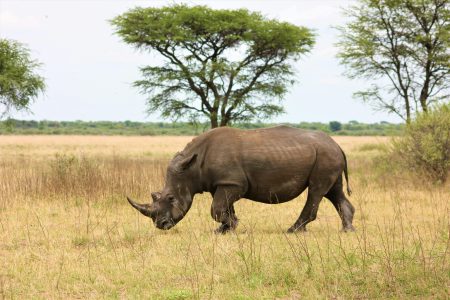
Facing similar threats in Kenya and Tanzania, the Eastern Black Rhino, a critically endangered subspecies of the Black Rhino, has been driven to the brink of extinction by poachers hunting them for their valuable horns. The relentless poaching pressure, driven by demand in traditional Asian medicine, remains the most acute threat, despite increased conservation efforts.
The Desert Black Rhino’s unique adaptation to Namibia’s arid landscapes is no defence against determined poachers. Despite their isolated habitat, they are highly susceptible to illegal hunting. Conservation strategies focusing on robust anti-poaching efforts, involving local communities, and employing advanced tracking are vital to protect these desert-dwelling giants within Namibia’s distinctive ecosystems.
In addition to poaching, habitat loss and fragmentation from farming and human expansion make things worse, confining rhinos to ever-smaller, isolated areas. Their slow reproduction makes recovery painfully slow, demanding ongoing protection.
African Parks reports that the black rhino population, including all subspecies, is currently estimated at around 6,421. Of those, fewer than 1,500 Eastern Black Rhinos survive. Without urgent and sustained action, this rare subspecies could disappear forever.
Northern White Rhinos
It’s not just black rhinos that are facing the threat of extinction. Already technically extinct, the last two remaining Northern White Rhinos in the world, Fatu and Najin, live in the Ol Pejeta Conservancy in Kenya.
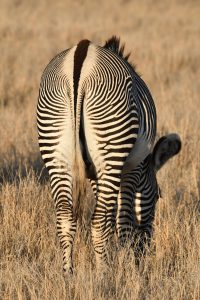
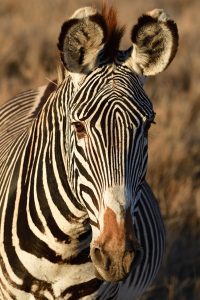 Grevy’s Zebra
Grevy’s Zebra
The striking Grevy’s Zebra – tall, narrow-striped, with a white belly and fuzzy ears – is now endangered. Once numbering 15,000 in the late 1970s, only about 3,000 remain today, an 80% decline. Most live in Kenya (around 2,800), with a tiny population left in Ethiopia.
They are one of the six unique animals in the Samburu six – a group of rare animal species found in the Samburu National Reserve in Kenya. These species are: the Grevy’s zebra, the Somali ostrich, the reticulated giraffe, the gerenuk, the Guenther’s dik-dik, and the beisa oryx.
Unlike their more common cousins, Grevy’s Zebras have been hit hard by habitat loss and competition with livestock for land and water. Past hunting and disease have also taken a toll. Urgent conservation is needed to protect their remaining habitats and reduce human-wildlife conflict, giving this unique zebra a fighting chance.
The African Wild Dog 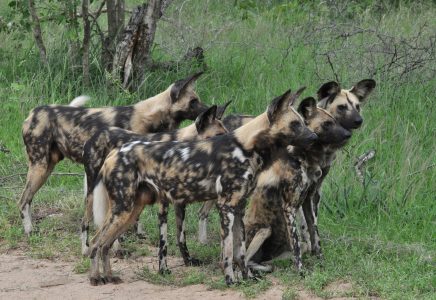
The African Wild Dog, also known as the painted dog, is a captivating yet critically endangered species facing immense pressure across Africa, including Tanzania and the Okavango Delta in Botswana. Highly social animals living in tightly knit packs with complex hierarchies, their survival is severely threatened by habitat fragmentation, which isolates populations and limits their ability to roam the vast territories they require for hunting.
This fragmentation also increases their vulnerability to human-wildlife conflict and the devastating impact of diseases like rabies and distemper, which can rapidly decimate entire packs, disrupting their intricate social structure and further jeopardising their already precarious existence in Tanzania’s diverse ecosystems.
Pemba Flying Fox
This flying fox-like animal is an endangered bat species which is part of the genus of megabats found exclusively on the Tanzanian island of Pemba. These gentle giants with a wingspan of 1.6 metres play a crucial role in the island’s ecosystem as vital pollinators and seed dispersers for various native trees and plants, contributing significantly to forest health and regeneration.
Tragically, their populations have declined dramatically due to habitat loss from deforestation for agriculture and charcoal production, compounded by direct hunting, making habitat destruction the most significant threat to their continued survival.
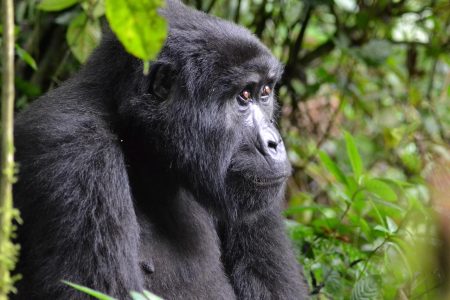 Mountain Gorilla
Mountain Gorilla
Mountain Gorillas in Rwanda, Uganda and the Democratic Republic of Congo (DRC) are a powerful example of how dedicated conservation efforts can bring a species back from the verge of extinction. Populations are rebounding in the Virunga Massif and Bwindi thanks to intensive protection and the vital role of tourism funding. Gorilla trekking permits generate crucial revenue for park management and local communities, fostering a vested interest in their survival.
This victory remains fragile. Relentless habitat encroachment due to human population growth and agricultural expansion continues to squeeze their limited territories, increasing the risk of conflict and disease. While their recovery offers hope, constant vigilance and proactive conservation are essential to safeguard these iconic primates in their mountain strongholds for generations to come.
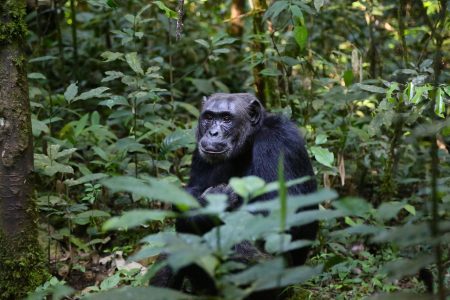 Chimpanzee
Chimpanzee
The future of Uganda’s chimpanzees hinges on intensified conservation efforts that address these interconnected threats. Uganda is a crucial stronghold for chimpanzees, our closest relatives, with significant populations residing in vital forests like Kibale National Park, Budongo Forest, and Queen Elizabeth National Park. However, these intelligent and social primates face a devastating triple threat of habitat loss, bushmeat trade and disease.
Their habitat is shrinking, driven by deforestation for agriculture, logging, and human settlement, relentlessly shrinking their forest homes, fragmenting populations and limiting their access to food and mates. While illegal, the bushmeat trade, driven by demand for their meat, further decimates their numbers. Isolated populations are especially vulnerable to poachers. Finally, they are very susceptible to diseases, including those easily transmitted between humans and chimpanzees. These are a significant threat with outbreaks capable of wiping out entire groups, especially in fragmented habitats where interaction with humans is more frequent.
Pangolin
All four African pangolin species face an existential crisis due to the insatiable demand in the illegal wildlife trade for their scales and meat. Temminck’s Ground Pangolin is the species with the widest distribution, found throughout southern and eastern Africa as well as extending into central Africa. Tragically, one of their primary defence mechanisms against natural predators – curling into a tight, armoured ball – makes them exceptionally vulnerable to poachers, who can simply pick them up.
Their scales, made of keratin – the same material as our fingernails – are erroneously believed to possess medicinal properties in some cultures, driving a lucrative black market. Additionally, pangolin meat is considered a delicacy in certain regions. This high demand, coupled with their slow reproductive rates, has placed all African pangolin species on the endangered list, pushing these unique and ecologically important insectivores towards extinction.
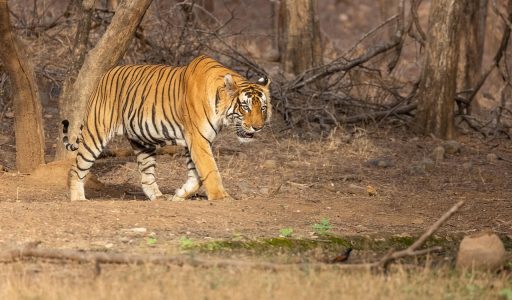 Bengal Tiger
Bengal Tiger
The Bengal tiger, which makes up the majority of the world’s wild tigers, has experienced a significant comeback in India. Thanks to expanded protected areas, stronger anti-poaching measures, and community involvement, the population has grown from around 1,800 to over 3,600 in recent years. However, they still face challenges like habitat loss, human conflict, and illegal hunting.
Continued conservation efforts are essential to ensure their survival and long-term recovery.
Gharial 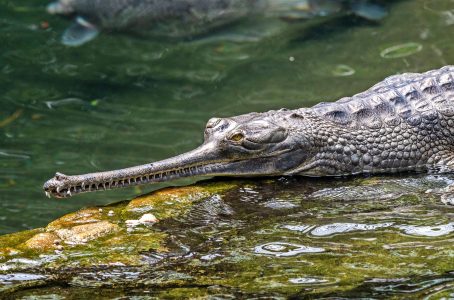
The gharial is a critically endangered crocodile native to rivers in northern India, Nepal, and Bhutan. It is known for its distinctive long, narrow snout and sharp teeth designed for catching fish. Adult males have a unique bulbous growth called a “ghara” on their snout.
Gharial numbers have dropped sharply due to habitat loss from damming, sand mining, and fishing net entanglement. Conservation efforts have included captive breeding, habitat protection, and releasing gharials into safe river sanctuaries like the National Chambal Sanctuary, aiming to restore their populations and secure their future.
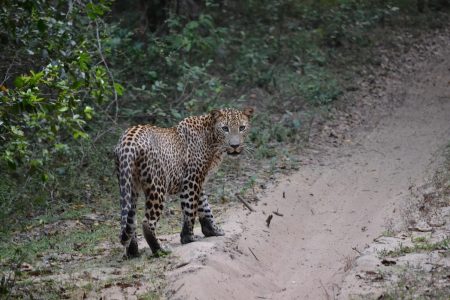 Sri Lankan Leopard
Sri Lankan Leopard
Sri Lanka is recognised as a global biodiversity hotspot. However, many of its unique animal species are endangered due to habitat loss, human-wildlife conflict, and other threats. The Sri Lankan Leopard is the island’s only leopard subspecies with an estimated population of under 1000.
Leopards are apex predators and play a crucial role in maintaining ecological balance. However, habitat fragmentation, poaching and retaliatory killings due to human-leopard conflict threaten their survival.
Sri Lankan Elephant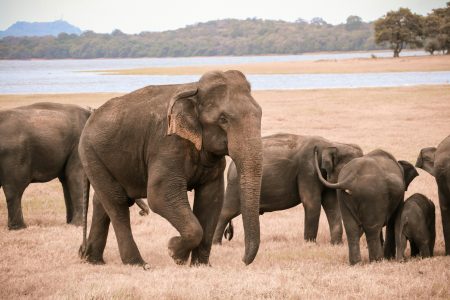
The Sri Lankan elephant is endangered partly because human encroachment has blocked important elephant corridors-natural pathways they use to migrate. Many of these corridors have been taken over by farming and settlements, forcing elephants into closer contact with people and increasing conflicts. The government is working to restore these corridors by relocating residents and compensating them, which could reduce human-elephant clashes by up to 50%. Protecting these migration routes is essential for the survival of Sri Lankan elephants and peaceful coexistence with communities.
What can you do?
This is by no means an exhaustive list of endangered animals. There are many more in every part of the world. While it might seem an insurmountable problem, the truth is that everyone can help protect endangered animals.
Supporting habitat conservation-like planting native plants and avoiding harmful chemicals, is a very good start. Choosing sustainable products and steering clear of items made from threatened species reduces demand that harms wildlife. See endangered animals in the wild. Travel to countries where conservation efforts are working in partnership with tourism. When you book a safari, some of the fees will inevitably go towards conservation efforts and upkeep of the reserves, as well as salaries for rangers who are the boots on the ground in the war against poaching.
Feel a need to do even more? Get involved. Volunteer, join community clean-ups, or support conservation groups. Speak up for stronger wildlife protections and adopt eco-friendly habits. Simply cutting down on meat and waste can help preserve the homes of endangered animals for the future. If you are keen to see a Grevy’s Zebra for yourself, they can be spotted in both Samburu and Buffalo Springs reserves in northern Kenya.
Contact
Somak House
Harrovian Business Village
Bessborough Road
Harrow On the Hill
HA1 3EX
Tel: +44 20 8423 3000
Fax: +44 20 8423 7700
Email: info@somak.com
Opening times
| Mon - Fri | : | 9am to 6pm |
| Sat - Sun | : | Closed |






